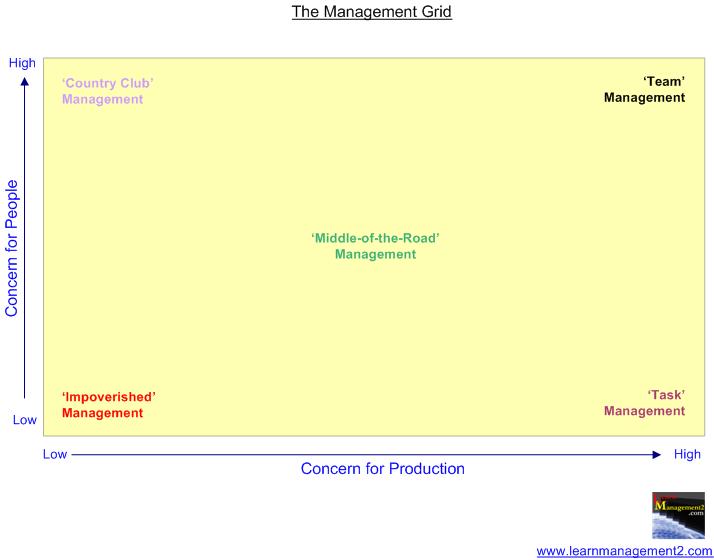The Management Grid
Blake And Mouton
Introduction
In 1964 Blake and Mouton conducted research investigating management behaviour. Their research revealed that there are two types of leaders, those who are concerned for production and those that have a high concern for people (or their staff). They mapped the findings on a grid which they called the management grid.

The Management Grid Manager Types
The management grid shows that there is a continuum of leaders running from those with a high concern to those with a low concern for staff and production. The grid below shows that this range can be divided into five types of managers. Let us look at these in more detail.
Impoverished Manager:
This manager shows low concern for production and low concern for people. A company with impoverished management are likely to face problems as production output will be low and staff are likely to be dissatisfied. An organisation with impoverished managers will have little focus on staff and production.
Country Club Manager:
is more concerned about his/her staff then getting the job done. It is good to show concern for staff, but at the same time productivity has to be monitored as employees are employed to undertake production activities.